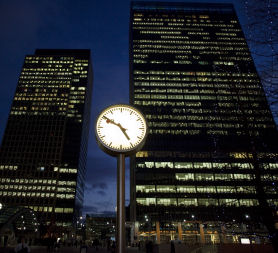Global economy: bubble to burst
The economic euphoria of the ‘go go years’ quickly turned to bust as the credit crisis rocked banks and entire continents. But what lessons have been learned by global finance?

For three years the world economy has been going through an often violent crash landing from the high altitudes of the world’s biggest credit bubble.
In that time, what began as funding concerns for small banks, quickly turned into fears for most of the western banking system, and post-Lehman the worst financial crisis in history.
At that point in autumn 2008 governments around the world stepped in.
The world’s biggest ever transfer of risk saw the banking system’s rotten debts, effectively transferred to governments and taxpayers.
The world’s biggest ever transfer of risk saw the banking system’s rotten debts, effectively transferred to governments and taxpayers.
At the same time, however the Lehman shock rocked confidence by such a degree that the wheels of world trade collapsed. Real economies descended into staggering recessions.
A combination of bailouts and economic collapse decimated the public finances of many countries. Within a year of the bailouts, the focus shifted from the solvency of banks to the solvency of nations.
The major economies, having already slashed interest rates, resorted to printing money to boost their economies.
At the same time the banks which, by this time had returned to health, began to prepare massive bonuses for their bankers.
This story has far from ended.
‘Choppy time’
Many economists’ predictions have already been confounded. Typically it takes longer for an economy to recover from a bubble, than the actual length of the bubble itself. If so, we are in for a choppy time.
To get to the heart of this mutating economic narrative, however, one needs to appreciate the heart of what the regulators refer to as the banking ‘go go years’.
In 2005, I did a special investigation into the credit boom, including an interview with an HBOS representative who proudly pronounced that “credit has been democratised in this country, and that is a good thing”.
By September 2008 the same interviewee would be seen on TV news headlines having to pronounce that his bank was safe.
In June 2007 I reported on growing fears that the banks “did not know what they were lending nor to whom”. The crunch began that summer.
To get to the heart of this mutating economic narrative, however, one needs to appreciate the heart of what the regulators refer to as the banking ‘go go years’
After the run on Northern Rock and its inevitable nationalisation, Channel 4 News also picked up on funny goings-on in Iceland.
Banks that had been unable to fund themselves commercially were now raising incredible sums of money from British internet savers. It all collapsed within six months.
Then, just as bankers in skyscrapers stopped cowering in fear in summer 2008, Lehman Brothers collapsed, taking world trade with it. The result: abandoned ghost ships in the world’s biggest ports, which I chartered a Singapore fishing boat to visit.
The shockwaves went round the world, and pushed the Bank of England into printing money, explained to me by the Governor Mervyn King.
But then the debt crisis hit sovereign nations rather than banks. And that story is yet to end.
-
Latest news
-
‘Government responsiveness should be improved’ says infected blood inquiry chair4m

-
Infected Blood scandal: How UK failed on a global scale4m

-
‘There’s a strong evidential basis’ for ICC to grant arrest warrants for Netanyahu, says criminal law expert4m

-
International Criminal Court prosecutor seeks arrest warrants for Israel PM and Hamas leaders3m

-
‘Highly unlikely there was foul play’ in Iran president helicopter crash, says Tehran professor5m

-




